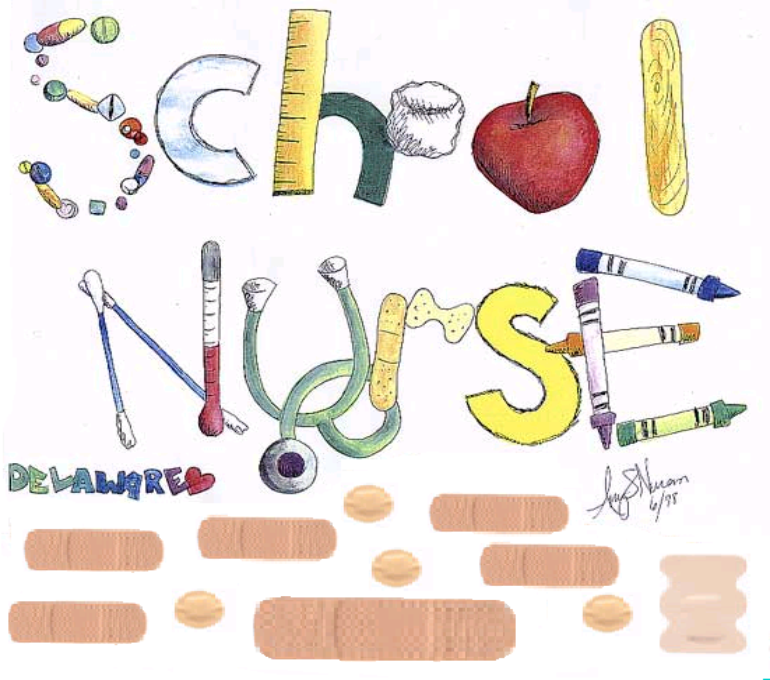Nurse's Office

School Health Services
The school nurse is available daily. Below is a list of services provided by School Health Services:
Nursing assessment of illness, injury and health-related problems
Evaluation of injuries, first aid provided if needed
Administration of Tylenol at age-appropriate dose for minor discomforts WITH PARENTAL CONSENT
Administration of Pepto-bismol at age-appropriate dose for complaints of stomach ache WITH PARENTAL CONSENT
Screening of Vision and Hearing
Blood Pressure Screening
Weight and Height
Nutrition Information
Health promotion and wellness information
Heath checks with Georgia Better Health provider and parental consent
Scoliosis Screening for 6 & 8th grades WITH PARENTAL CONSENT
Periodic head checks for lice
Dental care provided by Help a Child Smile dental program for students who qualify. Forms sent home with students.
Authorization for Medication Form
CPR Information
Community awareness, Hands-Only CPR- Check out this super fun website......and maybe save a life! American Heart Association website.
Be sure to play the Hands Only Symphony, and watch the Handwalker! Pass it along!
Is your child too Sick for School?
The main reasons for keeping your child home are:
---He is too sick to be comfortable at school.
---He might spread the sickness to other children.
Your child should stay at home if he has:
--A fever higher than 100.4^F
--Vomited more than once
--Diarrhea
--Frequent Cough
--Persistent pain (ear, stomache, etc)
--A widespread rash
Most of these problems need to be discussed wtih your child's doctor to know if an office visit is needed. (If your child has frequent complaints of pain that cause school absence, you should consider that your child may be avoiding school. Talk with his Dr. before too many days have been missed.)
On the other hand, children who do not have a fever and only have a mild cough, runny nose or other cold symptoms can be sent to school without any harm to themselves or others.
A runny nose is the way children respond to pollen, dust or a cold virus. Minor cold or allergy symptoms should not be a reason to miss school. Many healthy children have as many as six colds per year, especially in the early school years.
Coughing, especially if it is persistant during the day, can be a sign that a cold or allergy symptoms is getting worse. It may be a sign of a secondary infection ( se.g., sinusitis, pneumonia), which may require medical treatment. it also may be a sign of mild asthma.
Diarrhea and vomiting make children very uncomfortable. A single episode of darrhea is likel enough to keep your child at home. It could be very embarrassing and uncomfortable for your child to have another episode while in school. If darrhea or vomiting are frequent or are accompanied by fever, rash or general weakness, consult your child's doctor and keep him out of school until the illness opasses.
Fever (generally considered to be hight than 100.4 ) is an important symptoms, especially when it occurs along with a sore throat, nausea or rash. Your child may have an illness that could be passed to classmates and teachers. While you can treat the fever and usually make the child feel better temporaarily, the cause of the fever (and the risk of pasing it to others) is still there. Children with fever should stay home until there is not fever for 24 hours.
Strep throat and scarlet fever are two hightly contagious conditions caused by the same bacterial infedtion. They usually arrive with sudden sore throat and fever and often stomachache and headache. With scarlet fever, a rash usually appears within 12 to 48 hours. A child with these symptoms should see his doctor and should stay home until h is without fever and has been on antibiotics for 24 hours.
Pinkeye, or conjunctivitis, can be caused by a virus, bacteria or allergy. The first tow are very contagious. The eye will be red, and a cloudy or yellow discharge is usually present. The eye may be sensitive to light. Consult your child's doctor to see if antibiotic eye drops are needed. Again, your child should stay home until symptoms subside and he heas been on atibiotic eye drops at least 24 hours or until the doctor recommends your child treturn to school.
Middle ear infections can cause great discomfort and often fever, but are not contagious to others. your child should see his doctor for diagnosis and treatment and schould stay at home if he shas fever or pain.
Flu is a contagious virus that usually occurs inteh winter months. Symptoms include body aches, high fever, chills, congestion, sore throat and , in some children, vomiting. Your child should stay home until these symptoms improve, usually five to seven days. Consult your child's doctor for treatment suggestions to make your child more comfortabe.
brought to school can quickly produce an epidemic of tiching and scratching. Scabies are tiny insects that burrow into the skin and cause severe itching. Lice are tiny wingless insects, like ticks, that thrive on the warm scalps of children and cause itching. Both should be treated immediately, with advice from your child's doctor. Children need to stay home from school until head lice are dead and until nits or eggs are removed with a special fine comb. head checks should continue for 10 to 14 days. Caution your child against sharing combs, brushes, hats or other clothing. In the sase of scabies, children should stay home for 24 hours after treatment.
All of these illnesses can be spread easily, both in school and in the family. Keep in mind that handwashing is the most important hting you and your child can do to help prevent the spread of infections.
Make sure your child's school knows how to reach you during the day, and that there is a back-up plan and phone number on file if the school cannot reach you.
Lice information
Dear Parents:
Head lice have become more and more of a problem over the last few years. The number of children infested with head lice is increasing all across the country. Control of head lice depends on prompt diagnosis and effective treatment. Your help in inspecting your child at least weekly throughout the school year for the presence of head lice would be greatly appreciated.
We suggest the following procedure for inspecting your child for head lice:
1. Under bright light begin looking at the back of the head just above the neck area.
2. Part the hair section by section and look closely for head lice or nits (eggs). Eggs will usually be located near the scalp.
3. Depending on the length and thickness of the hair, it should take between 5 and 15 minutes to properly inspect a child's head.
If you suspect your child is infested with head lice please notify the school nurse. In addition, the entire family should be inspected for head lice as well. For information on how to treat your child's head lice infestation consult your family physician, a local pharmacist, or feel free to contact your child's school nurse for recommendations.
Information on controlling head lice can be found on the National School Integrated Pest Management web Site at http://schoolipm.ifas.ufl.edu or from the National Pediculosis Association at www.headlice.org.
There are some shampoos that repel lice such as:
Boo Shampoo
Fairy Tales Rosemary Repel Shampoo
Licenders Shampoo
These shampoos can be found online, in salons, and drugstores.
Sincerely,
ACHS/ACMS School Nurse
Risky Sleepy Teens
National survey data indicate teens who got too little sleep on school nights were more likely to do things that are bad for them in comparison to their peers who got enough sleep.
At the Centers for Disease Control and Prevention, researcher Lela McKnight-Eily says teens who reported sleeping less than eight hours a night were more likely to report behaviors such as smoking, drinking, getting into fights, and considering suicide.
McKnight-Eily advises parents to help keep their teens’ sleep hours regular and without distractions:
``If an iPod or a cellphone is keeping your adolescent from getting the adequate rest that they need, you remove those from the room.’’ (7 seconds)
The study was in the journal Preventive Medicine.
Learn more at hhs.gov.

